Buy Cursed Castilla: Maldita Castilla EX
In December 2012, the one-man developer known as Locomalito released Maldita Castilla, another in a long line of games that embraces retro sensibilities and was released for free. It was universally praised by European gaming sites for many things, including its challenge and loyalty to the old style of gaming while still remaining fun for the current generation of players. With the opportunity to publish it on consoles, Locomalito tweaked the game further and added more levels to the adventure. Not forgetting his roots, though, he released the game on the PC via Steam in the form of Cursed Castilla: Maldita Castilla EX.
There's not much story to this game beyond the introductory sequence, but what's present is fascinating. A great war arose in the kingdom of Castilla in Spain. Countless lives had been taken senselessly in these battles, and one death in particular causes a woman to grieve. A demon in an innocent form was able to trick the woman into giving him her tears, which he used to create a set of keys to unlock the underworld and unleash demons. As one of the king's faithful knights, you've been assigned to find the woman and close the doorway forever.
The original game — and this title, by proxy — has often been compared to Capcom's classic Ghosts 'n Goblins, and that comparison is well warranted in several different areas. From a gameplay standpoint, both titles are similar enough. You have a knight that specializes in throwing projectiles in the four cardinal directions instead of using melee combat. You have a set number of lives and the ability to take very few hits per life before a continue is needed. The weapon set is varied enough that each one you equip completely alters your attack strategy. Pick up the ax, and you have to compensate for your attack arcs while the holy water means having to worry about your slower attack speed. Death means that you'll return to a basic sword.
If you're looking at the general gameplay, the differences between Capcom's game and Cursed Castilla are small. You can take three hits instead of two before a life ends. Power-ups, like a shield or fairy, stay with you until you pick up another one to replace it, similar to the weapons system. Similar to the original Castlevania, the stages are segmented into smaller areas instead of being one sprawling trek from beginning to end. The stages are also punctuated with several boss fights.
This game happens to share one thing that made Capcom's classic so infamous: the difficulty. Part of that comes from the adherence to the knockback mechanic, which has you falling backward once you get hit, often resulting in you falling into spikes and a few pits. The lack of a controlled mid-air jump doesn't help things, and neither does the fact that you can't attack while climbing ropes and chains. It can be frustrating, but you rarely feel like the deaths are cheap, since the controls are otherwise responsive.
There are other things that help ease the pain of the initial difficulty. Levels aren't procedurally done, and the design is thoughtful enough that you can see the patterns emerge and come up with a strategy for beating a stage. This line of thinking also goes for the boss fights, which are easy to read and aren't as tough as you'd think. Dying is harsh, but you'll spawn at the beginning of a room instead of having to return to the beginning of a stage, and this happens both when you lose a life and continue, so you can brute-force your way to the end if you have a little skill and loads of patience. The high numbers of the overall death counter will be a constant reminder that even if things sound easy, the game is tough to crack if you're trying to lose as few lives as possible.
Putting in the time to learn the nuances and strive for dying less is a big motivation if you're trying to get the better endings. Going straight through the game gives you the worst ending, which is still nice considering how it is delivered. Opening up the real final stage requires you to explore to find five mystical gems, a task made tougher by the fact that the game offers limited exploration. Deaths in some parts of a stage mean that you're immediately locked out of seeing even a decent ending since you lost access to one of those gems. If you manage to get them all, there's still the matter of finding some rare artifacts to sweeten up the ending, something that requires you to shoot everything and jump or kneel at spots you'll find by accident (if you aren't using a guide). It's slightly obtuse, but that's how most classic games did it. Do all of that, and you still won't be able to get the best ending unless you go through in one run, and the game will tell you outright that you'll get a middle-of-the-road ending if you use four or more continues.
The presentation is completely retro without doing something that systems of the time wouldn't have been able to accomplish. Whether you give the game a quick glance or sit there analyzing it, you can't help but get the sense that Cursed Castilla is a long-lost Sega Genesis game that would look amazing at the system's launch and still hold its own by the system's end. Character designs waver between only slightly grotesque, with hanging bodies and human-faced worms, to a little whimsical, with large frogs featuring cartoon eyes and wearing Spanish armor. Adding to the authentic pixel look is the ability to add scanline filters and borders to give it a more authentic arcade experience. There's also the option to stretch the screen to fill in the 16:9 ratio, but that isn't recommended. The sound is also authentic, with the score providing a heavy bass sound that was a signature of the system. The game is light on voice, and while some of the effects sound canned, it is perfect for fans of nostalgia.
Cursed Castilla: Maldita Castilla EX is a perfect example of the kind of well-crafted, hair-pulling experience that adventure fans know all too well. Controls are precise, the retro look is as authentic as you'll get without modern flourishes, and the gameplay feels perfect, even if it is highly difficult. Some will dislike the tedious means of getting a better ending, but those who cut their teeth on the 16-bit era of platformers will be right at home here.
Score: 8.5/10
More articles about Cursed Castilla: Maldita Castilla EX


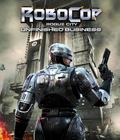
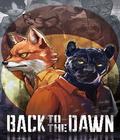
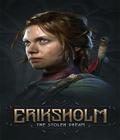


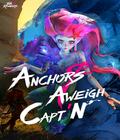
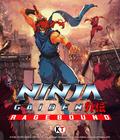
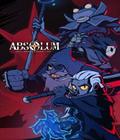

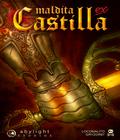 Maldita Castilla EX is an extended version of the action platformer that's full of creatures from medieval myths from Europe and chivalry romances.
Maldita Castilla EX is an extended version of the action platformer that's full of creatures from medieval myths from Europe and chivalry romances.











